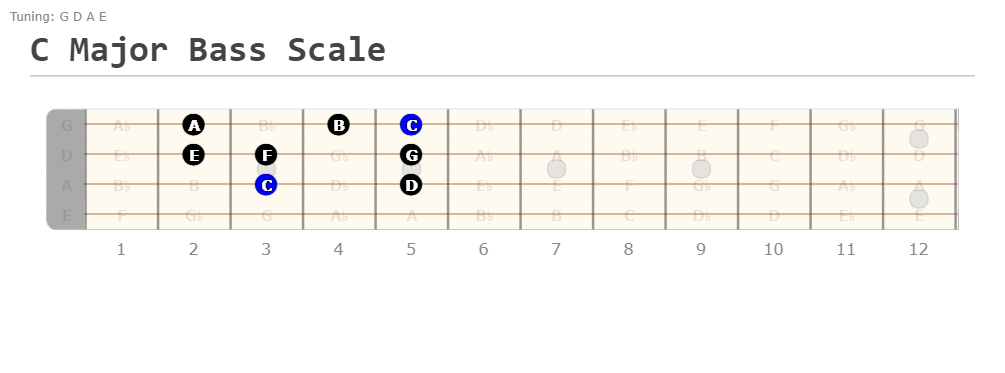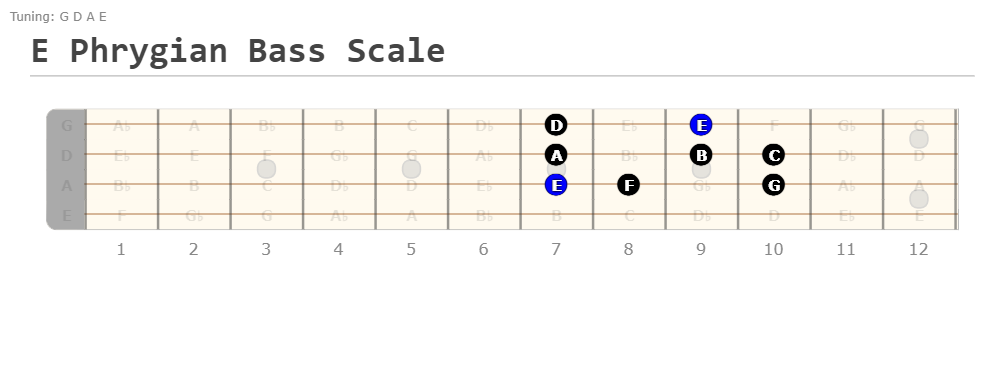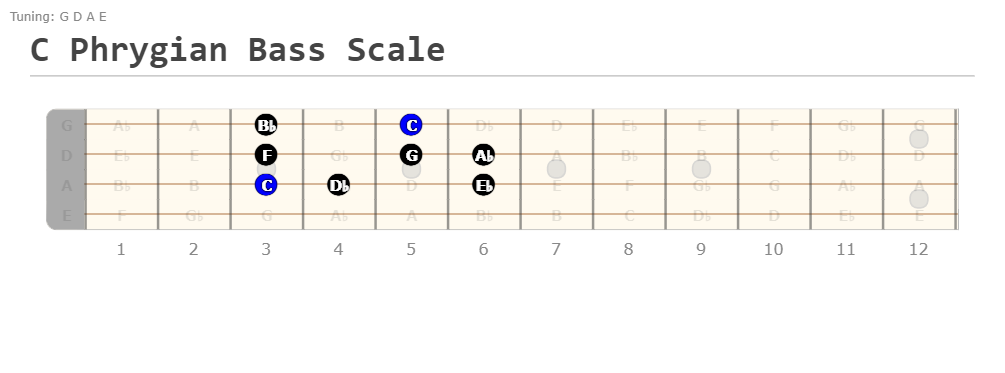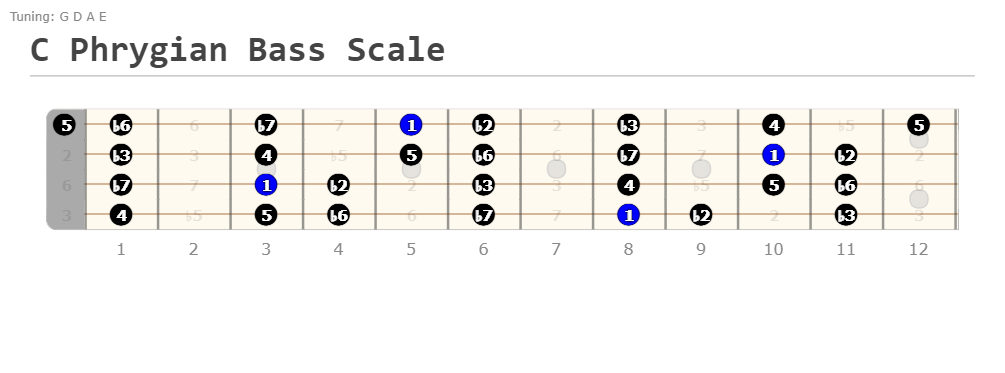Phrygian Bass Scale Tab
E Phrygian Bass
Phrygian Bass Scale
Introduction to the Phrygian Bass mode
Discover the exotic and outside sound of the Phrygian mode and scale in the comprehensive guide for bass guitar.
You’ll learn how to incorporate the Phrygian mode into your bass playing, what the mode is, and look at a Phrygian fretboard diagram to help you visualize the scale to better understand its musical applications.
So, if you’re looking to expand you’re musical horizons and overall bass playing, this lesson is for you!
Table of Contents
What is the Phrygian mode?
The Phrygian bass mode is the 3rd mode of the major scale, and is commonly used over minor and minor 7th chords because of its harmonic structure.
Being the 3rd mode of the major scale simply means the Phrygian bass scale is built from the 3rd degree of the major scale.
You’ll see this put into practice in the upcoming examples.
The odd naming of the Phrygian mode
There was an ancient kingdom called Phrygia, and that’s where the Phrygian mode got its name.
Phrygian scale formula and interval structure
The Phrygian scale formula is:
1-b2-b3-4-5-b6-b7
The b2 is the single interval that sets the Phrygian mode apart from the Aeolian mode (the natural minor scale).
Constructing Phrygian in whole and half steps
Here’s the Phrygian mode constructed in whole and half steps:
H-W-W-W-H-W-W
This means you can pick any root note, follow this pattern of whole and half steps, and when resolving on the root note you will have played through a Phrygian scale!
Applying Phrygian
Phrygian is considered a minor mode, because its root chord is a minor triad.
When adding the b7 degree to the root chord, you get a minor 7th chord.
This means that Phrygian is used over minor chords and minor 7th chords possessing the same root.
The Phrygian mode also has a perfect 4th, which makes it a solid contender to use over a minor 11 chord.
In a major scale progression you can use the Phrygian mode over the ii, iii, and vi chords, because they’re all minor chords.
Phrygian tends to have a “dark” sound, because of the half step interval after the root (the b2). This dark sound tends to build tension, so make sure you understand and think about the context of the music before you use Phrygian.
C Major Scale Bass
Here’s the C major bass scale, which you’ll use as a reference for understanding Phrygian.
If you don’t know, the interval structure of the major scale has no sharps or flats. The scale formula is 1-2-3-4-5-6-7.
Notes in C major
C-D-E-F-G-A-B

E Phrygian Bass Scale
Here’s the E Phrygian bass scale.
This is the 3rd mode of the C major scale (shown above). You can derive the Phrygian mode from the C major scale or any other major scale by building the scale from the 3rd degree.
As you can see, E Phrygian has the same notes as the C major scale, but E is used as the root note.
Since E is the new root note, the interval structure changes in the scale sequence! The new structure is the Phrygian scale sequence: 1-b2-b3-4-5-b6-b7
Notes in E Phrygian
E-F-G-A-B-C-D

C Phrygian Scale Bass
Here’s the C Phrygian bass scale.
You may sometimes here this referred to as the parallel mode for C major or C minor.
Remember, relative to the C minor scale, the only note that’s changed is the 2nd has moved to a flattened 2nd (b2).
Relative to the major scale, the flattened notes are the b2, b3, b6, and b7 intervals.
Notes in C Phrygian
C-Db-Eb-F-G-Ab-Bb

C Phrygian Bass Mode Fretboard Diagram
Here’s a complete C Phrygian bass scale diagram, with the intervals.
Even though I used note names in the above examples, it’s also good and important to analyze the mode by looking at it’s interval structure across the fretboard.

Conclusion: Practicing the Phrygian Bass Mode
Now that you’ve learned some Phrygian bass mode and scale shapes, it’s time to put them into practice!
When practicing the mode pay attention to how the b2 sounds relative to a minor chord or minor 7th chord with the same name.
Start by practicing with the E Phrygian scale, because all of it’s notes are natural, which makes it easier to understand. Plus, you’ll be familiar with the notes of this mode if you know the C major scale.
Learning the bass guitar neck notes will also make it much easier to understand the Phrygian mode and any other bass mode.
From there you can practice using C Phrygian, the Phrygian mode parallel to C Natural Minor. This will help you understand the difference in sounds between the b2 and 2 intervals in a minor context.
I suggest searching for a Phrygian backing track on YouTube for practice.
You can also search for a minor chord backing track, where you can practice and hear the difference between Phrygian and the other two minor modes, Dorian and Aeolian.
What’s next?
Looking for some other bass scales to master? Then check out these 2 lessons:
The minor and major blues scales on bass can help add texture to your typical bass lines through incorporating the blues note.
But before you do that, it’s important to know your major pentatonic scale patterns for bass.
Lastly, if you’re looking to improve your overall bass guitar playing, then check out my list of best bass guitar books.
Thanks for reading!

